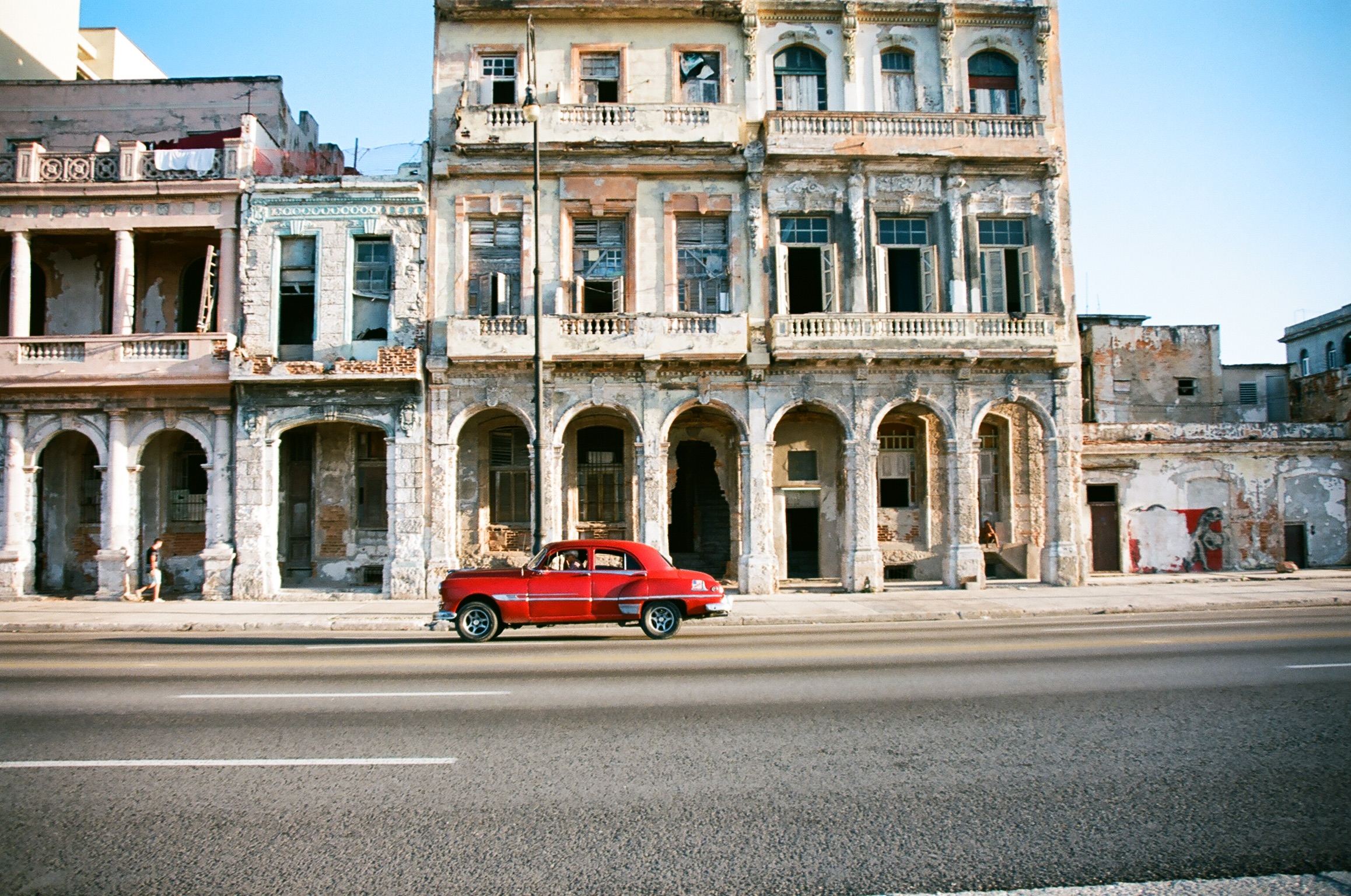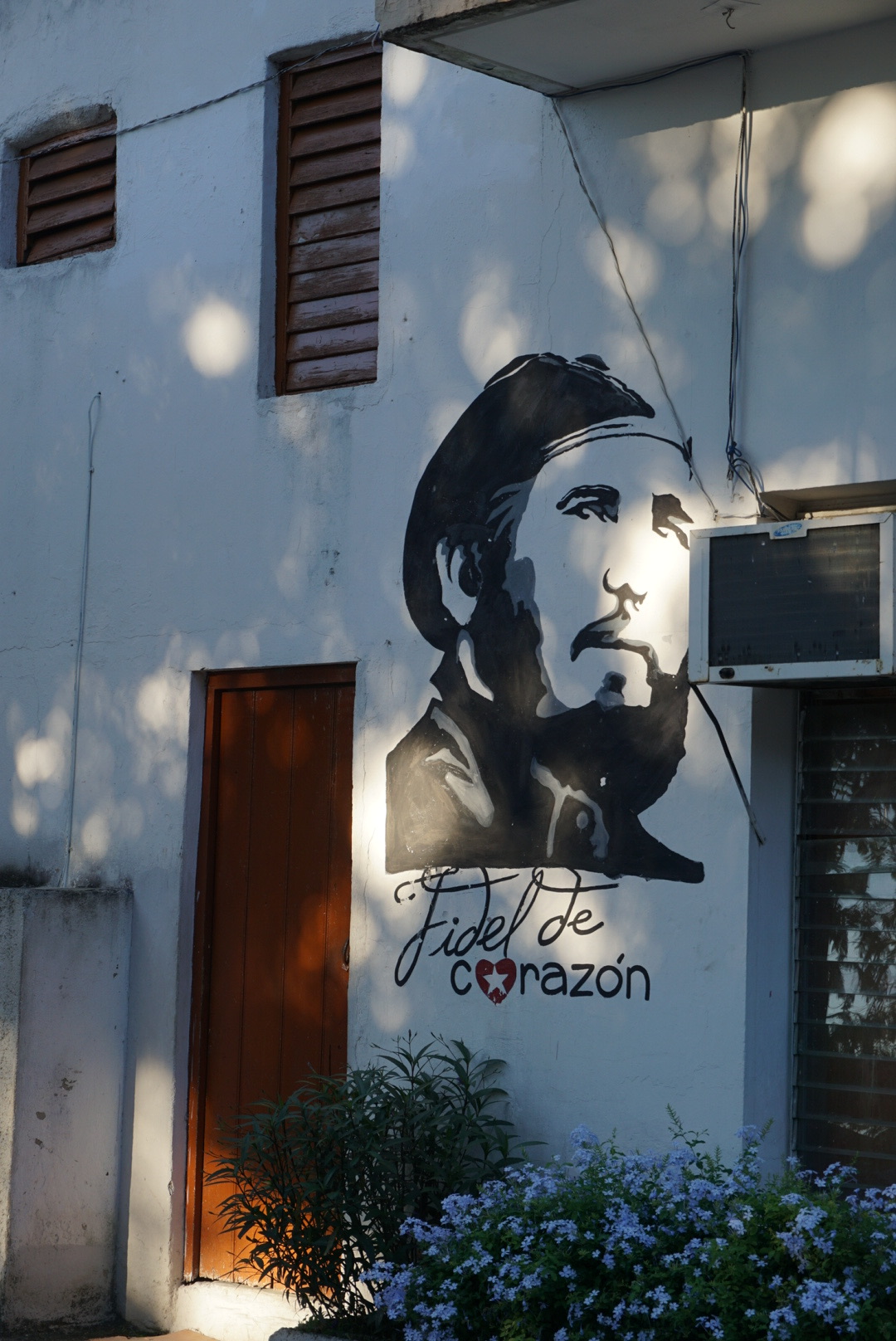Since September, Americans have been able to fly direct to some cities in Cuba from Florida but just this week several airlines launched direct flights from locations throughout the U.S. to the city of Havana for the first time in 55 years. By the end of the year there should be flights from Atlanta, Charlotte, Houston, Los Angeles, Newark, New York, and four from Florida — Miami, Fort Lauderdale, Orlando and Tampa. Of the 20 daily nonstop flights allowed to Havana, 14 will be from Florida, home to the U.S.'s largest population of Cuban Americans. We had the opportunity to travel to Cuba in November and we have gotten a lot of questions about how we did it because there are still certain restrictions on travel to Cuba for U.S. citizens. So, I thought I'd put together some details here and then I'll add some additional posts later about where we stayed and what we did.
Understanding the U.S. Travel Restrictions
This next part is going to sound confusing -- but I promise I will help you understand it. In order to travel to Cuba as an American citizen you must fit into one of the 12 categories of legal travel. These categories include: educational activities and people-to-people travel, professional research or meetings, public performances/clinics/exhibitions, religious activities, humanitarian projects, journalistic activities, family visits, activities by private foundations/organizations, support for the Cuban people, exportation/importation of technologies, certain export transactions for private use, and official U.S. or foreign business. I don't know about you, but when I read this long vague list I was a bit overwhelmed and still didn't see how I could legally travel to Cuba.
From everything we read and researched we found out that the best way to travel to Cuba legally (if you are an individual that wants to see the country and learn about the people and not just sit on a beach or snorkel) is to choose the category "educational activities and people-to-people travel". If you want to just go to Cuba to sit on a beach you can't (legally) -- and, honestly, there are a lot of other countries where you can do that. The reason you should want to go to Cuba now is to experience the rich culture that has been basically hidden from Americans for the past 50+ years and interact with the people. In 2014 Obama made it legal for Americans to plan their own "people-to-people" trips to Cuba. Before that you had to go to Cuba with an organized group if you want to go.
The other requirement within the "educational activities and people-to-people" travel category is that you have a full-time travel itinerary planned. But, this doesn't mean you need to join an organized tour or plan every little thing out ahead of time. We prepared a list ahead of time of the things we wanted to do in the country in case we were asked any questions as we were leaving the country (we weren't) and I kept a list on my phone of everything we did every day in Cuba in case we were asked to show proof of our full-time itinerary on the way back into the U.S. (we weren't). We did hear from some people that U.S. Immigration/Customs agents sometimes randomly select people to interview but we didn't notice that happening on our flight. All in all, in terms of immigration/customs we didn't really notice anything different traveling between the U.S. and Cuba than we did when we traveled between the U.S. and France (aside from the much shorter Cuba flight!)
Booking Airplane Travel and Visas
As of this week it looks like JetBlue, American, United, and Delta all have flights to Cuba from the U.S. When you book your airline tickets online the airline will ask you which legal travel category you fit within. You choose which one of the above categories works for you. Also, if you book an Airbnb apartment they will make you check a box as you book a rental that affirms you are traveling within one of the legal categories. When you arrive at the airport the airline will have you fill out paperwork to get a Cuban travel visa. You will also note your category on this paperwork and sign it. The visa we got from JetBlue cost $50 per person. Some websites say you will need medical insurance but we were never asked for any. We did have to fill out paperwork as we entered the country about our health status, but that was it.
Cuban Requirements
When you enter Cuba you will fill out immigration/customs paperwork. We had to write really fast because our flight was so short (the pilot said we'd be up in the air for about 20 minutes). When we landed we went through the usual border patrol that you have when you enter any country. We handed them our passports and they asked us questions. The main questions the Cuban authorities asked us as we entered the country had to do with where we were staying and for how long, who we were traveling with, and what we were doing in the country. I printed out our hostal addresses so it was easier to just show them where we were staying. Each interview was fairly short -- although I was still a little nervous at first because it is a Communist country. After the brief interview we went through metal detectors and then you could collect your baggage (we only brought carry-ons). We also turned in our health questionnaire as we left the airport. Aside from all that, entering Cuba was easy, and the really exciting part was exploring the country.
Money and Internet/Phones
Just in the last few months the U.S. phone companies and credit card companies have been formalizing relationships in Cuba. Some phone carriers have roaming plans now for Cuba. We have AT&T and T-mobile and our phones worked but the pricing was still very high. We did not use the roaming and relied heavily on WiFi. Right now WiFi is still hard to find in Cuba, a lot of parks have it but not very many other places. We laughed every time we found a huge group of Cubans and tourists standing together using their phones in a plaza or park because it was a sign WiFi was near. Usage and access to internet is controlled by the government. So government run hotels also had WiFi. In order to use the WiFi throughout the country you had to buy a ETECSA WiFi card (it took us a while to find some because a lot of places run out of them). We bought 1 hour WiFi cards throughout our trip.
None of our credit cards or debit cards worked in Cuba so we had to plan ahead and bring cash. We just brought American cash and then changed it periodically for the Cuban convertible peso (CUC).
Why Travel to Cuba Now?
To visit Cuba is to step back in time. It doesn't have a lot of commercialization yet, unlike other Caribbean countries, and it has a vibrant culture, beautiful art scene, amazing architecture, and it seems a little bit mysterious. A lot of people we talked to want to travel to Cuba now before Starbucks and McDonald's are on every corner and some of the authentic charm is gone. Some people we visited with think Cuba will stay the same for another 50 years. I think the unknown is making Cuba a hot spot to travel to right now. So, if you've been nervous about going or confused about how to make it work, feel free to contact us with any questions via our Contact Us page. We hope our tips above help and make it seem a little bit easier to understand. You can do it. Anyone can go. Now is the time to plan and make it happen if you want to see the real Cuba.





